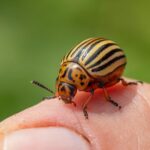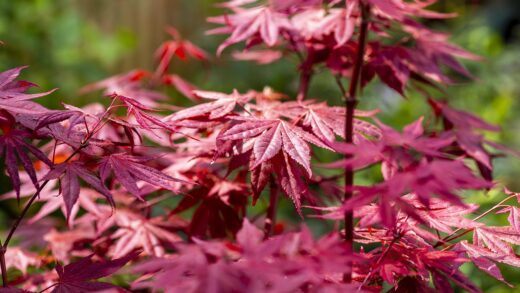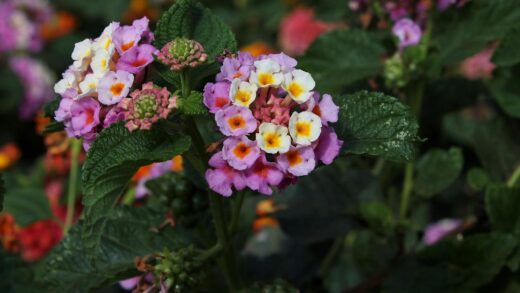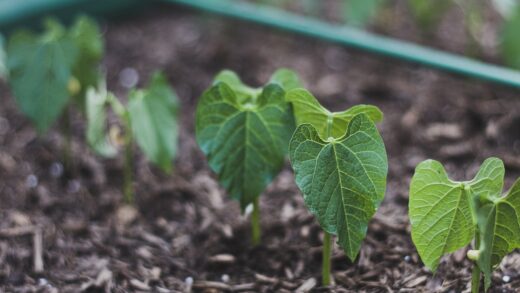While the common mallow is renowned for its resilience and generally robust nature, it is not entirely immune to the challenges posed by diseases and pests. A proactive and knowledgeable gardener can easily manage these potential issues, ensuring their plants remain healthy and vibrant throughout the growing season. Understanding the specific threats that can affect mallow, recognizing the early signs of an infestation or infection, and implementing effective management strategies are key to successful cultivation. This expert guide provides a comprehensive overview of the most common diseases and pests that target common mallow, with a strong focus on preventative measures and integrated pest management techniques. By arming yourself with this knowledge, you can protect your plants and maintain a thriving, beautiful garden.
The foundation of disease and pest management is prevention, which always begins with providing the plant with its ideal growing conditions. A healthy, vigorous plant growing in a suitable location is inherently more capable of resisting and recovering from attacks than a plant that is stressed by poor conditions. For common mallow, this means ensuring it is planted in well-drained soil in a location that receives ample sunlight. Overcrowding is a significant contributor to disease, so providing adequate spacing between plants to promote good air circulation is one of the most effective preventative measures you can take. Proper irrigation, by watering at the base of the plant rather than on the foliage, also plays a crucial role in minimizing the risk of fungal infections.
Regular monitoring of your plants is the second pillar of effective pest and disease control. Make it a habit to inspect your common mallow plants closely at least once a week. Check the undersides of leaves, the stems, and the developing flower buds, as these are common hiding spots for pests and the first places that diseases often appear. Early detection is critical; it is far easier to manage a small, localized problem than a widespread infestation or infection. Learning to identify the specific signs and symptoms of common mallow problems will allow you to intervene quickly and appropriately.
Finally, adopting an integrated pest management (IPM) approach is the most sustainable and environmentally responsible way to deal with garden issues. IPM prioritizes cultural and biological controls over chemical interventions. This means focusing on creating a healthy garden ecosystem that encourages natural predators, using physical barriers or traps, and only resorting to pesticides (preferably organic ones) as a last resort when a pest population reaches a damaging threshold. This balanced approach protects not only your mallow plants but also the beneficial insects, pollinators, and overall biodiversity of your garden.
Common fungal diseases
By far the most prevalent disease to affect common mallow is mallow rust, caused by the fungus Puccinia malvacearum. This disease is so specific to the mallow family that its presence is almost a defining characteristic. The symptoms are unmistakable: you will first notice small, pale yellow spots on the upper surfaces of the leaves. Upon turning the leaf over, you will find corresponding raised, orange-to-brown pustules that contain the fungal spores. As the disease progresses, these pustules can merge, and the leaves may turn yellow, wither, and drop prematurely, weakening the plant.
More articles on this topic
Prevention is the most effective strategy against mallow rust. The fungus thrives in damp, humid conditions with poor air movement. Therefore, ensure your plants are spaced correctly to allow air to circulate freely and dry the foliage. Always water at the base of the plant to keep the leaves as dry as possible, and water in the morning so any moisture that does get on the leaves has a chance to evaporate during the day. At the end of the season, a thorough cleanup is vital; remove and destroy all mallow debris, as the fungal spores can overwinter on fallen leaves and stems, reinfecting the plants in the spring.
If you spot the first signs of rust, act immediately. Pluck off and destroy the infected leaves to prevent the spores from spreading to the rest of the plant. For a more established infection, you may need to prune away entire stems. Be sure to disinfect your pruning tools between cuts with rubbing alcohol or a bleach solution to avoid spreading the disease. In severe, persistent cases, fungicides containing copper or sulfur can be used, but these are often a temporary fix if the underlying cultural conditions are not addressed.
Powdery mildew is another fungal disease that can occasionally affect common mallow, particularly in late summer when warm days are followed by cool, damp nights. This disease appears as a white, dusty coating on the leaves, stems, and flower buds. Like rust, it is favored by poor air circulation and humidity. The same preventative measures, such as proper spacing and careful watering, are effective against powdery mildew. If an infection does occur, sprays based on potassium bicarbonate, neem oil, or sulfur can help to control its spread.
Identifying and managing insect pests
Common mallow can attract several sap-sucking insects, with aphids being one of the most frequent visitors. These small, pear-shaped insects often congregate in colonies on the tender new growth, flower buds, and the undersides of leaves. They feed by piercing the plant tissue and sucking out the nutrient-rich sap, which can lead to distorted growth, yellowing leaves, and a general decline in the plant’s vigor. They also excrete a sticky substance called honeydew, which can lead to the growth of black sooty mold on the leaves.
More articles on this topic
Managing aphids is often straightforward and can usually be achieved without resorting to harsh chemicals. For a small infestation, a strong jet of water from a garden hose is often sufficient to dislodge them from the plant. You can also simply wipe them off with your fingers. Encouraging natural predators is a highly effective long-term strategy. Ladybugs, lacewings, and hoverflies are all voracious predators of aphids. You can attract these beneficial insects to your garden by planting a diversity of flowering plants, such as dill, fennel, and yarrow.
Another pest to watch for is the flea beetle. These are tiny, dark beetles that, as their name suggests, will jump away like fleas when disturbed. They feed on the leaves, chewing numerous small, round holes, which can give the foliage a distinctive “shot-hole” appearance. While the damage from a light infestation is mostly cosmetic, a heavy infestation can severely stress the plant, especially young seedlings. Floating row covers can be used to protect vulnerable young plants early in the season. Maintaining good weed control is also helpful, as many weeds can act as alternative hosts for flea beetles.
Spider mites can also be a problem, particularly in hot, dry conditions. These are not true insects but are tiny arachnids that are difficult to see with the naked eye. The first sign of their presence is often a fine webbing on the undersides of leaves and a stippled, yellowed appearance on the leaf surface. They thrive in dry environments, so one of the best preventative measures is to ensure your plants are well-watered during hot spells. Misting the foliage can also help to raise the humidity and deter them. If an infestation takes hold, insecticidal soap or neem oil can be effective controls.
Other potential plant health issues
Beyond the common fungal diseases and insect pests, common mallow can occasionally suffer from other health problems, often related to environmental stress or cultural practices. One such issue is root rot, which is not a disease in itself but rather a condition caused by overly wet and poorly aerated soil. When the soil is waterlogged, the roots are deprived of oxygen and begin to die and decay, making them vulnerable to attack by soil-borne fungi and bacteria. The symptoms above ground include yellowing lower leaves, wilting (even when the soil is wet), and stunted growth. The only solution is prevention: ensure your mallow is planted in well-drained soil and avoid overwatering.
Leaf spot diseases, caused by various types of fungi or bacteria, can also appear on mallow leaves. These typically manifest as distinct spots or blotches on the foliage, which may be brown, black, or tan, sometimes with a darker border. While generally not as serious as rust, severe leaf spot infections can reduce the plant’s photosynthetic ability and spoil its appearance. The management strategies are the same as for other fungal diseases: improve air circulation, avoid wetting the foliage, remove and destroy infected leaves promptly, and ensure a good autumn cleanup of all plant debris.
Nutrient deficiencies can sometimes be mistaken for diseases. For instance, a general yellowing of the leaves, particularly the older, lower ones, can indicate a nitrogen deficiency. Yellowing between the leaf veins while the veins themselves remain green (interveinal chlorosis) is often a sign of a magnesium or iron deficiency, which can be caused by an overly alkaline soil pH locking up these nutrients. Before reaching for a fungicide, it is always worth considering if the plant’s nutritional needs are being met. A balanced, organic fertilizer applied in the spring can prevent most of these issues.
Finally, physical damage from weather, such as hail or strong winds, can create wounds on the stems and leaves that can provide an entry point for diseases. While you cannot control the weather, you can choose a planting site that offers some protection from the prevailing winds. After a storm, it is a good idea to inspect your plants and prune away any badly damaged stems to create clean cuts that will heal more quickly. A healthy plant is remarkably resilient and will usually recover quickly from minor physical damage.
Integrated pest management strategies
Adopting an Integrated Pest Management (IPM) strategy is the most intelligent and sustainable approach to keeping your common mallow healthy. IPM is a holistic approach that uses a combination of techniques to manage pests and diseases, with a strong emphasis on preventing problems before they start. The first and most important step in IPM is to foster a healthy, resilient plant. By providing the right conditions—sunlight, good drainage, and adequate nutrition—you create a plant that is naturally more resistant to attack. A stressed plant is a magnet for pests and diseases.
The second level of IPM involves physical and cultural controls. This includes practices like proper plant spacing to ensure good air circulation, watering at the soil level to keep foliage dry, and diligent sanitation, such as removing diseased leaves and clearing away all plant debris in the autumn. It also involves using physical barriers where appropriate, such as floating row covers over young seedlings to protect them from flea beetles, or hand-picking larger pests like caterpillars. These simple, non-chemical actions form the backbone of an effective IPM program.
The third level is promoting biological control. This means creating a garden environment that is welcoming to the natural enemies of your pests. Planting a diverse range of flowers, especially those with small nectar-rich blooms like alyssum, coriander, and dill, will attract beneficial insects like ladybugs, lacewings, and parasitic wasps. These “good bugs” are your allies in the garden, and they provide a free and continuous pest control service. Avoiding the use of broad-spectrum chemical pesticides is crucial, as these will kill the beneficial insects along with the pests.
The final and last resort in an IPM program is the responsible use of pesticides. If a pest or disease problem becomes severe and threatens the life of the plant, a targeted intervention may be necessary. IPM prioritizes the use of the least toxic options first, such as horticultural oils, insecticidal soaps, or botanical insecticides like neem oil. These products are generally more targeted and have a lower impact on beneficial insects and the wider environment than broad-spectrum synthetic chemicals. They should be applied carefully, following the label instructions, and only to the affected plants.




















